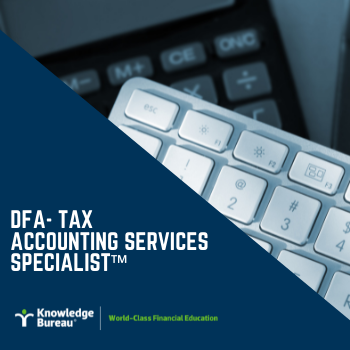Payroll Penalties You Need to Know About
When a business hires an employee, it is important for that employee to be “formally” hired, that is with a role description, a rate of pay or salary level and a statement of expectations that define the relationship between the employer and employee, all well documented and filed in case of audit from the CRA. This is particularly important post-COVID, as CRA will be auditing the Canada Emergency Wage Supplement (CEWS) payments businesses received, right up to the end of 2023. But it is also very important if you have hired family members.
Excerpted from Knowledge Bureau’s Advanced Payroll Course. Sign up by March 31 and save $200 on your tuition fees.
When you pay family members who work in your business there is a higher level of scrutiny by the CRA. Unfortunately, most family businesses don’t deliver on the documentation requirements and can get themselves into hot water as a result.
Tax Tip: CRA will consider family members to be in a “non-arm’s length” relationship which means will be looking for inappropriate income splitting that moves income from the returns of high earners to low earners in the family. You can, however, legitimize the transactions and benefit from income splitting with family members to make sure that is all properly deductible by  the business and reportable by the employee. Be sure:
the business and reportable by the employee. Be sure:
- There is a formal employment process, described in more detail below.
- The work your relative is doing is necessary and would otherwise have required the hiring of someone who is not related to you.
- The work was actually performed by your relative.
- The amounts paid were reasonable and what you would have paid a stranger.
- The amounts paid are also reasonable based on your relative’s age and experience.
- The amounts were paid in a business that has a profit motive, as opposed to a hobby.
Employed or Self-Employed? You’ll also want to determine whether the people you are hiring are employed or self-employed. When there is a “master-servant” relationship, there is an “employer-employee” relationship requiring the deduction of CPP, EI and income tax, in other words, mandatory statutory deductions. The employer portion of these deductions paid for your employees are tax deductible.
In these cases, the employer has the right to decide where, when and how the work is done in return for salary or wages. A T4 slip will also be issued. See more details below.
However, if you are hiring a subcontractor, there is a business relationship and generally an invoice is issued by the subcontractor, usually within 30 days, for payment. The subcontractor, if unincorporated, calculates and pays both portions of the CPP (employer and employee) when the tax return is filed. The taxes would be paid at that time as well, and may require quarterly instalment remittances if over $3000 when the subcontractor files their return.
Account Reconciliations
The PD7A form issued electronically monthly by the CRA on the My Business Account, includes a statement of account for each payroll account, showing transactions through the account in the year to date. Occasionally, the account statement will not agree with the employer’s internal records. Penalties and interest charged to the payroll account will be recorded on this statement of account.
It is important for the person who does payroll in your business to review the statement of account regularly and to reconcile it to the employer’s internal records as soon as it is received. Any discrepancies should be followed up with the CRA immediately.
Audit Tip: It is not uncommon to have interest fees, or misapplied payments in your CRA account. It also helps to confirm that the CRA has received payments, reviewed year-end forms, or to retrieve your digital PD7A.
Penalties
CPP and EI contributions and income tax withheld from employees are trust funds held by the employer in trust for the Crown until they are remitted. Not surprisingly, CRA views these funds as never belonging to the employer, the penalties for failure to withhold and/or remit the correct amounts can be significant.
The CRA oversees remittance dates carefully. The penalty is 10% to the part of the amount to be remitted that is more than $500, if the remittance is late. This increases to 20% of the amount on the second and repeated delinquencies, if these arise knowingly or because of gross negligence.
If the CRA believes that the failure to remit, or to remit on time arose knowingly, or negligently, the penalty applies to the full amount, not just the amount more than $500.
If an employer under-withholds statutory deductions, the penalty is 10% of the amount that was not deducted. However, if an employer fails to deduct the proper amount two or more times in the same calendar year, a penalty of 20% applies to the second and all other later failures. The 20% penalty applies only if the two remit failures were made knowingly or negligently, and so the onus is on the employer to demonstrate that its repeated failures were inadvertent.
Interest
Interest accrues on amounts owed from their due date, until the date the funds are received. The rate at which interest is charged is the same rate that is used for late, or deficient income tax instalments and varies quarterly.
Next Time: Waiving Penalties Stemming from Payroll Audits
